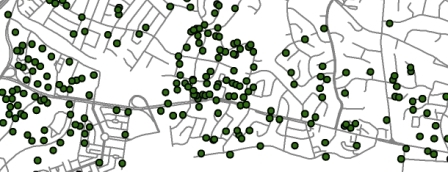Matrix Demonstration Project
Campbell Collaboration Systematic Reviews
- The effects of Hot Spot policing on crime
- Does “hot spots” policing simply displace crime?
- Spatial displacement and diffusion of benefits among geographically focused policing initiatives
One Pagers:
- Hot Spots of Juvenile Crime in Seattle
- Police Officers on Drug Corners
- Trajectories of Crime at Places
- General Deterrent Effects of Policing Hot Spots
- Optimizing Patrol Time in Hot Spots
- Policing Crime & Disorder Hot Spots
- Problem-Oriented Policing in Violent Crime Spots
- Different Strategies at Hot Spots of Violent Crime
Hot Spots Lab

Research continues to find that focusing police resources on very small and highly concentrated crime locations can work to reduce crime. But once hot spots are identified, what should officers do when they get to hot spots? How should they spend their time? What tactics and strategies should they implement? The Micro-Places slab of our Evidence-Based Policing Matrix shows numerous examples and interventions targeting very small geographic locations such as a block, street segment, alley, intersection, specific address or cluster of addresses. The Hot Spots Lab serves as a resource on how to implement this important research finding into practice in different types of jurisdictions.
Readings and Videos:
- Procedural Justice in Hot Spots (Weisburd et al., 2022)
- Hot Spots Experiment in Sacramento
- Institutionalizing Hot Spots in Minneapolis
- Crime Reduction Areas in Alexandria
- NIJ Real World Seminar: Hot Spots Policing
- Use of Patrol and Problem-Solving at Hot Spots
- Hot Spots: Case of Places
- Jacksonville Operation Safe Streets
- Putting Hot Spots Research into Practice

